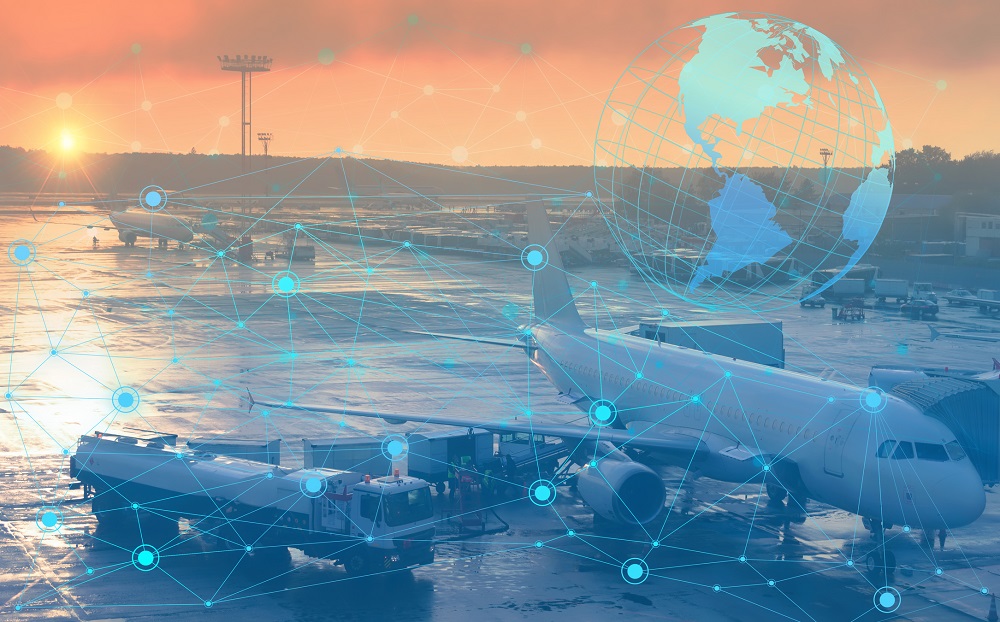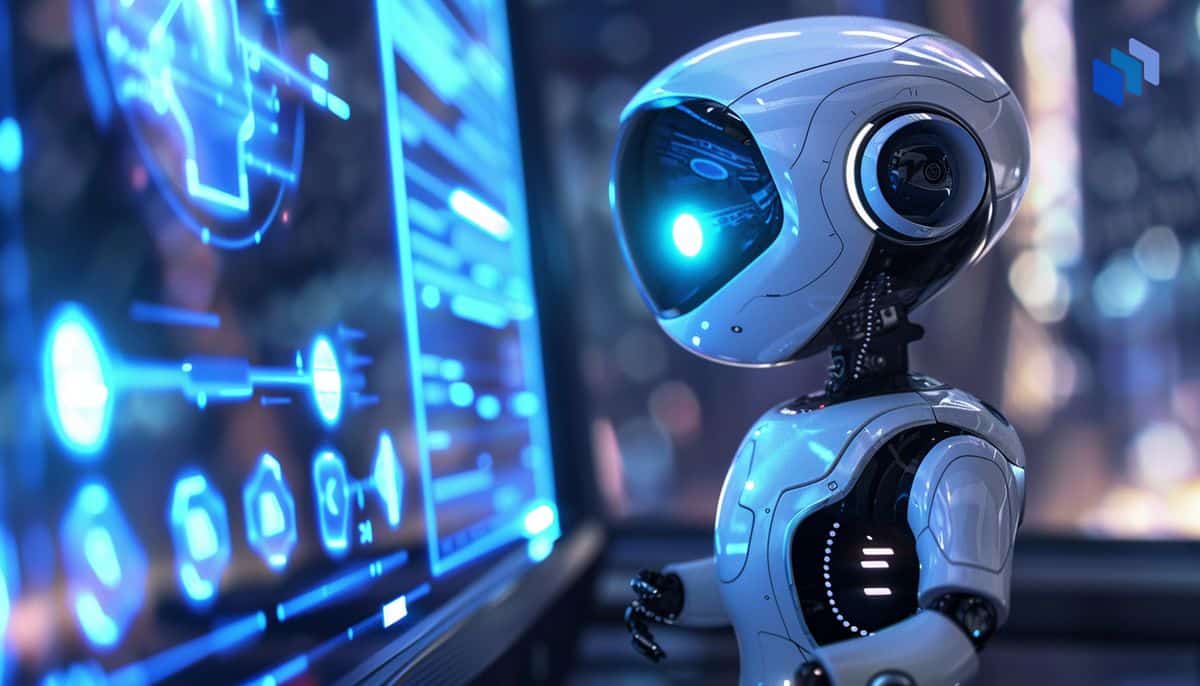With over $865 billion in operating revenue in 2019 worldwide, the airline sector has nearly tripled in the last 15 years. Experts predict that passenger traffic will double over the next 20 years, and it comes as no surprise that many of the leading airline companies such as American Airlines and Southwest have already started to look at the newest technologies to amp up their services.
AI is among the favored techs used to bring innovation into this industry, keep pace with increased customer demands, and improve overall efficiency at all levels. Just to give an example, Delta Air Lines’ manager of predictive technology engineering James Jackson confirmed this trend while speaking at an intelligent maintenance-themed presentation during the 2019 AEEC/AMC and MMC general session. “We want to integrate some of the more advanced technologies such as machine learning, artificial intelligence, natural language processing, and deep learning into our predictive maintenance process.”
But let’s have a closer look at the AI and ML-based technologies that will enhance (or already have) the aviation industry in the not too distant future. (For more on the latest aviation tech, see The Role of Artificial Intelligence in the Aviation Industry.)
Next-Gen Autopilots
Unmanned aircraft systems (UASs) are certainly one of the most widely known applications of cognitive computing, especially since drones have moved well beyond their military use to become a mainstream gizmo used for agricultural, commercial, and industrial purposes. But the current AI technology is moving on at such amazing pace, that the new autopilots have near-human intelligence these days.
Some systems originally developed for UAS safety have reached the cockpits of many commercial aircraft, and they can do much more than just act as autopilots. Able to compensate for difficult handling during complex maneuvers by automatically using the data they obtain from sensors, they’re becoming true copilots that can help reduce the cognitive fatigue experienced by many pilots. And that sounds so much like EDI from Mass Effect that I’m going to switch my career and become a pilot just to talk with an intelligent computer who tells me the importance of raising shields to deflect an incoming attack.
Preventing Disasters
Although the blame for some recent air disasters has been put on faulty AI, intelligent computers can likely reduce the risks for everyone on board by a significant margin. One of these technologies is Skywise, born from the partnership between Palantir and Airbus to collect huge amounts of fleet data in real time to reduce unplanned maintenance on aircraft and flight cancellations. No need to explain how, if implemented correctly, this tech alone can save millions of dollars.
IBM Watson’s AI will be used to guide the on-field repair staff, while GE’s solution will use data collected by aircraft sensors to feed a machine-learning-based predictive maintenance service that will reduce the upkeep of the jet engines. Even NASA jumped on board (pun intended), and is helping collect data shared between the National Transportation Safety Board, the Federal Aviation Administration, and more than 50 airlines and aircraft manufacturers. This data is coordinated by MITRE for its Aviation Safety Information Analysis and Sharing (ASIAS) data consortium, a program that will be used to teach AI how to discover patterns of anomalies in flight data. This way, the algorithms may be able to establish whether these patterns are predictive of potential issues and detect them before they happen.
Improving Communications
Air traffic control (ATC) communications are always a mess. Loud background noise, high-speed communications, and jumbled words all make it very difficult for pilots to understand traffic alerts and instructions in a timely manner. Things can become even more confused in Europe, where the heavily accented English makes it really hard for pilots to understand what on earth (well… maybe on air would be more appropriate) is happening around them. And if you have ever heard an Italian trying to speak English (other than me, obviously), you would perfectly understand what I mean. AI may help ameliorate this constant challenge by leveraging its latest natural language processing (NLP) capabilities to provide easy-to-use and highly accessible real-time transcripts of these conversations.
AI can also assist with other no-less-cumbersome communication issues. Any business that needs to coordinate dozens of employees knows very well how complicated it may be to maintain productivity during tough times. Airlines must manage extremely complex and diversified networks of people such as pilots, engineers, flight attendants and other crew members who often speak different languages or come from different countries. Even just rescheduling any one of them can be a massive chore, but it can be easily solved by an AI-powered manager. A machine can take into account multiple factors such as certifications and qualifications of the crew member in a matter of seconds, and cross-reference them with info about their qualifications, availability and flight fatigue for efficient scheduling.
Enhancing Customer Experience
Much like any other sector where customer satisfaction is a factor, the airlines may benefit a lot from the newest AI technologies. The most intuitive applications include collecting customer data to determine their preferences, use AI to improve marketing research efforts, increase customer retention, and enhance the offer. Computer vision (CV) can be used to screen passengers’ baggage, determine their sizes more efficiently, reduce the risk of lost luggage issues and prevent smuggling of illegal substances.
Other AI-based tech such as facial recognition has already been used by companies such as Delta Air Lines to speed up the check-in process. It may improve the quality of life for many travelers. Chatbots and virtual assistants have been used to provide customers with info about the status of their flight, help them resolve issues, and assist them during check-in requests and boarding procedures. (For more on chatbots, see We Asked IT Pros How Enterprises Will Use Chatbots in the Future. Here’s What They Said.)
Fleet & Operations Management
Aircraft cost a lot to maintain and operate, especially large fleets. United Express alone, for example, operates roughly 4,600 flights a day to 357 airports across all the entire planet. Improving their efficiency can significantly reduce operational costs and overhead, and AI can help in a lot of ways. From optimizing ticket prices dynamically, to predicting flight delays, optimizing flight routes, and detecting frauds, ML can enhance the operational efficiency of both commercial fleets and air freight services.
Companies such as Airbus are even developing custom AI technologies to enhance the efficiency of their planes even before they’re built. By analyzing data coming from various factories, they can draw information about the manufacturing process, predict potentially disruptive events, and tackle any problem as early as possible — sometimes even before it occurs.
Conclusion
Right now, the big shots of commercial passenger airlines are the early adopters who are spearheading the AI revolution in the aviation sector. However, the whole industry is showing great potential and is fertile ground for the development of many of these highly modernizing solutions. However, safety is paramount, as the world has already experienced the devastating consequences of a poorly implemented AI technology.






